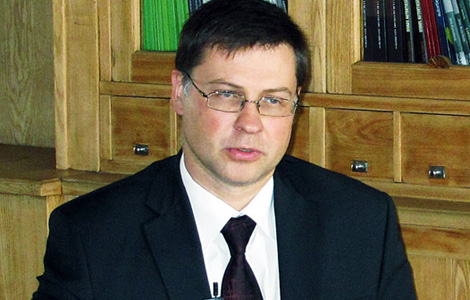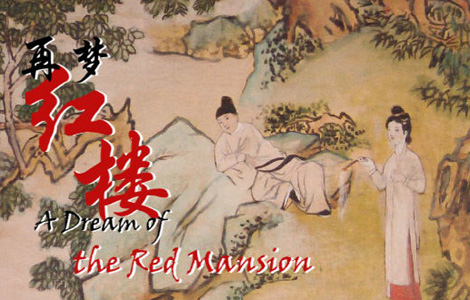Ceramics reflect port's past
Updated: 2013-07-18 23:01
By ZHANG KUN (China Daily)
|
||||||||
Ten pieces of ancient ceramics from the Qinglong town excavations will be restored and displayed at the Shanghai Museum by next June, reinforcing Shanghai's history as a trading port from as early as the 7th century.
These are ceramics made in kilns from different parts of China including Changsha in Hunan province, Yue and Longquan both in today's Zhejiang province, and Jingdezhen in Jiangxi province.
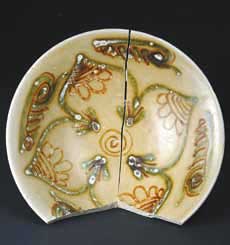 |
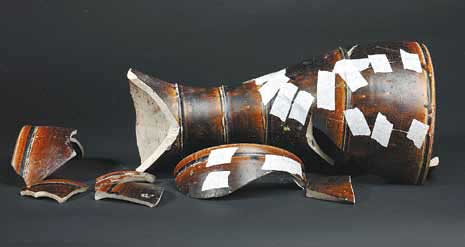 |
|
Two pieces of ceramics from the Qinglong town excavations are being restored and will be displayed at the Shanghai Museum. Photos provided to China Daily | |
They were all excavated from Qinglong town at suburban Shanghai's Qingpu district over a period in the past three years.
"The excavation from Qinglong town has shown us a picture of a once-prosperous town, of concentrated population and convenient transportation, in the Tang (AD 618-907) and Song dynasties (960-1279)," says Chen Xiejun, director of Shanghai Museum.
The museum's archaeology department has made emphatic efforts in restoring the urbanization history of Shanghai in the past few years.
"The Qinglong town project will go on for decades, and we have already made some important discoveries," says Song Jian, head of the department.
The 10 pieces are some of the best from the excavations, and they will also be the first exhibits to be shown.
Qinglong town was not a tomb site, but rather a town buried by time, so most of what could be excavated were already seriously damaged, says Song.
Among the first to be restored is a paigu drum (waist drum) in brown glaze from Changsha kiln.
There has never been a drum like this found among Changsha kiln ceramics, or any other kiln in the southern part of China, says Lu Minghua, head of the ceramics department at the museum. It is a significant milestone in the study of ceramics in China.
Like the others, the drum is broken into many pieces, with some parts missing.
"The crackle patterns, and the rich layers of the glaze are particularly challenging in the restoration," says Bu Weimin, a veteran ceramic restorer at Shanghai Museum.
It's difficult to restore a piece to its original perfect condition, but more so to make sure every step is reversible. All the glue and other materials we use have to be removable, so that future restorers will be able to work on it again with more developed technology," he says.
Bank of America Merrill Lynch has made a commitment to sponsor the restoration of the 10 ceramic pieces from Qing-long town, as part of its art conservation project this year. With the sponsorship, Bu and his colleagues will be able to leverage better and get more resources for the work.
"We may be able to work with universities to have high polymer materials tailor-made for the restoration," Bu says.
Extensive records about Qinglong town were found in the historical documents of Shanghai before the site was discovered during a river dredging operation in the late 1980s, according to Song, the archaeologist.
Folklore has it that during the Three Kingdoms Period (AD 220-280), the leader of Wu Kingdom built war ships named "Green Dragon" there and defeated the enemy of the Wei Kingdom. The river known as Suzhou Creek today was back then named "Green Dragon River", or Qinglong River.
From the 7th to 12th century, Qinglong town was a port that connected the Yangtze River to the East China Sea. Many ceramic works would be exported from there.
As the river silted up and its estuary shifted east, Qinglong town gradually lost its strategic location and declined from the 14th century. The town center moved eastward, too, gradually growing into what is modern Shanghai's old city center.

 'Despicable' minions upset Depp's 'Lone Ranger' at box office
'Despicable' minions upset Depp's 'Lone Ranger' at box office
 'Taken 2' grabs movie box office crown
'Taken 2' grabs movie box office crown
 Rihanna's 'Diamonds' tops UK pop chart
Rihanna's 'Diamonds' tops UK pop chart
 Fans get look at vintage Rolling Stones
Fans get look at vintage Rolling Stones
 Celebrities attend Power of Women event
Celebrities attend Power of Women event
 Ang Lee breaks 'every rule' to make unlikely new Life of Pi film
Ang Lee breaks 'every rule' to make unlikely new Life of Pi film
 Rihanna almost thrown out of nightclub
Rihanna almost thrown out of nightclub
 'Dark Knight' wins weekend box office
'Dark Knight' wins weekend box office
Most Viewed
Editor's Picks
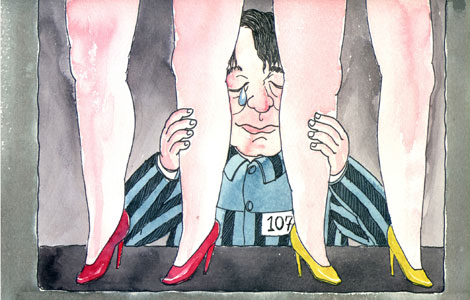
|

|

|

|
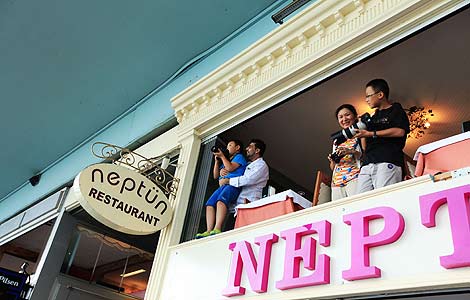
|
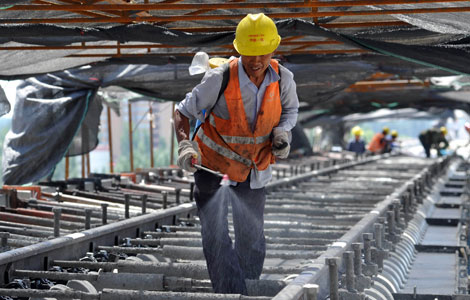
|
Today's Top News
US Olympic body rejects boycott call over Snowden
US unlikely to be swayed by pork firm's possible IPO
Alibaba earnings tripled in first quarter
Top film regulator relaxes control on scripts
Markets inch up after Fed's testimony
GSK finance head not allowed to leave
Putin puts US ties above Snowden
DPRK demands Panama free seized ship
US Weekly

|

|
